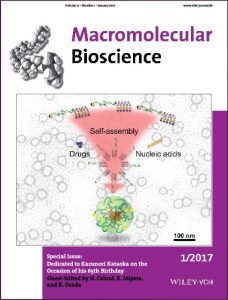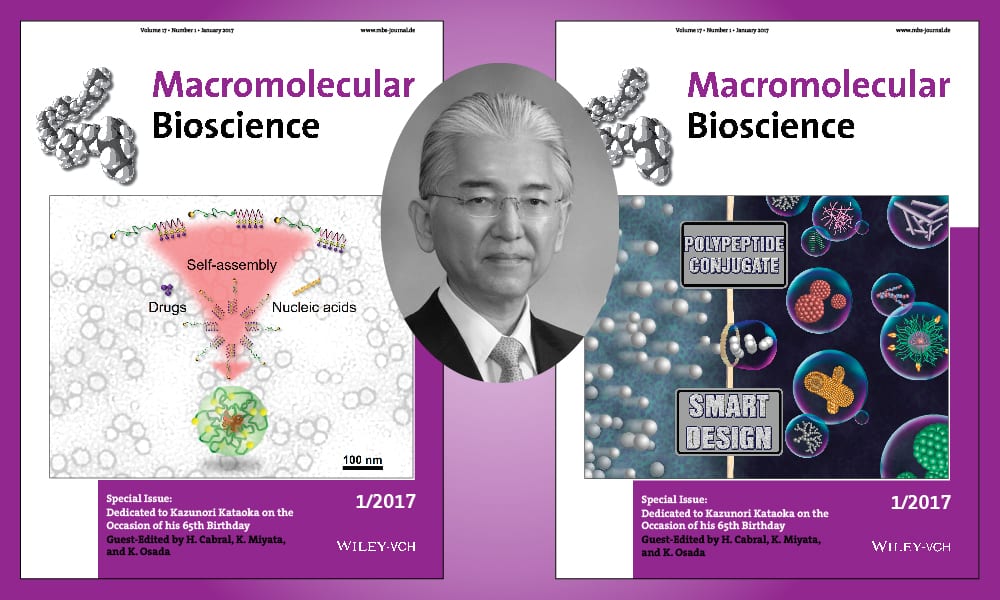 Prof. Kataoka has been an inspiration to an incalculable number of students and researchers around the world for several decades, and his pioneering contributions have helped shape the nanomedicine field. This special issue, guest-edited by Profs. H. Cabral, K. Miyata and K. Osada from the University of Tokyo, was initiated on the occasion of Prof. Kataoka’s 65th birthday. It highlights a broad range of topics, with 12 papers doing a great job in representing Prof. Kataoka impact on the field. The Macromolecular Journals team would like to thank Prof. Kataoka for his continued support and wishes him all the best for the future.
Prof. Kataoka has been an inspiration to an incalculable number of students and researchers around the world for several decades, and his pioneering contributions have helped shape the nanomedicine field. This special issue, guest-edited by Profs. H. Cabral, K. Miyata and K. Osada from the University of Tokyo, was initiated on the occasion of Prof. Kataoka’s 65th birthday. It highlights a broad range of topics, with 12 papers doing a great job in representing Prof. Kataoka impact on the field. The Macromolecular Journals team would like to thank Prof. Kataoka for his continued support and wishes him all the best for the future.
You can find an overview of the articles and Prof. Kataoka’s achievements in the editorial. All articles are available for free for a limited time.
Overview articles in this special issue include:
Wim Hennink and Twan Lammers recap the recent approaches for improving the targeting ability of nanomedicines against solid tumors.
Ernst Wagner reviews the structure-activity relationship of polyamide carrier systems for the efficient delivery of small interfering RNA.
Hideyoshi Harashima reviews current nanomedicine strategies for controlling the biodistribution, tumor accumulation and subcellular targeting of drugs.
Nobuhiro Nishiyama together with Horacio Cabral review the role and potential of supramolecular structures for concurrent therapy and diagnosis, so called theranostics.
Vicent J. Nebot and Maria J. Vicent review the recent achievements in the development of polypeptide-based drug conjugates.
Jean-Christophe Leroux and Davide Brambilla review the preparation methods of layer-by-layer polymeric assemblies incorporating solid nanoparticles for achieving nanostructures with high drug loading and tunable drug release.
Ashutosh Chilkoti shares his insights into cell-based biohybrid drug delivery systems.

















